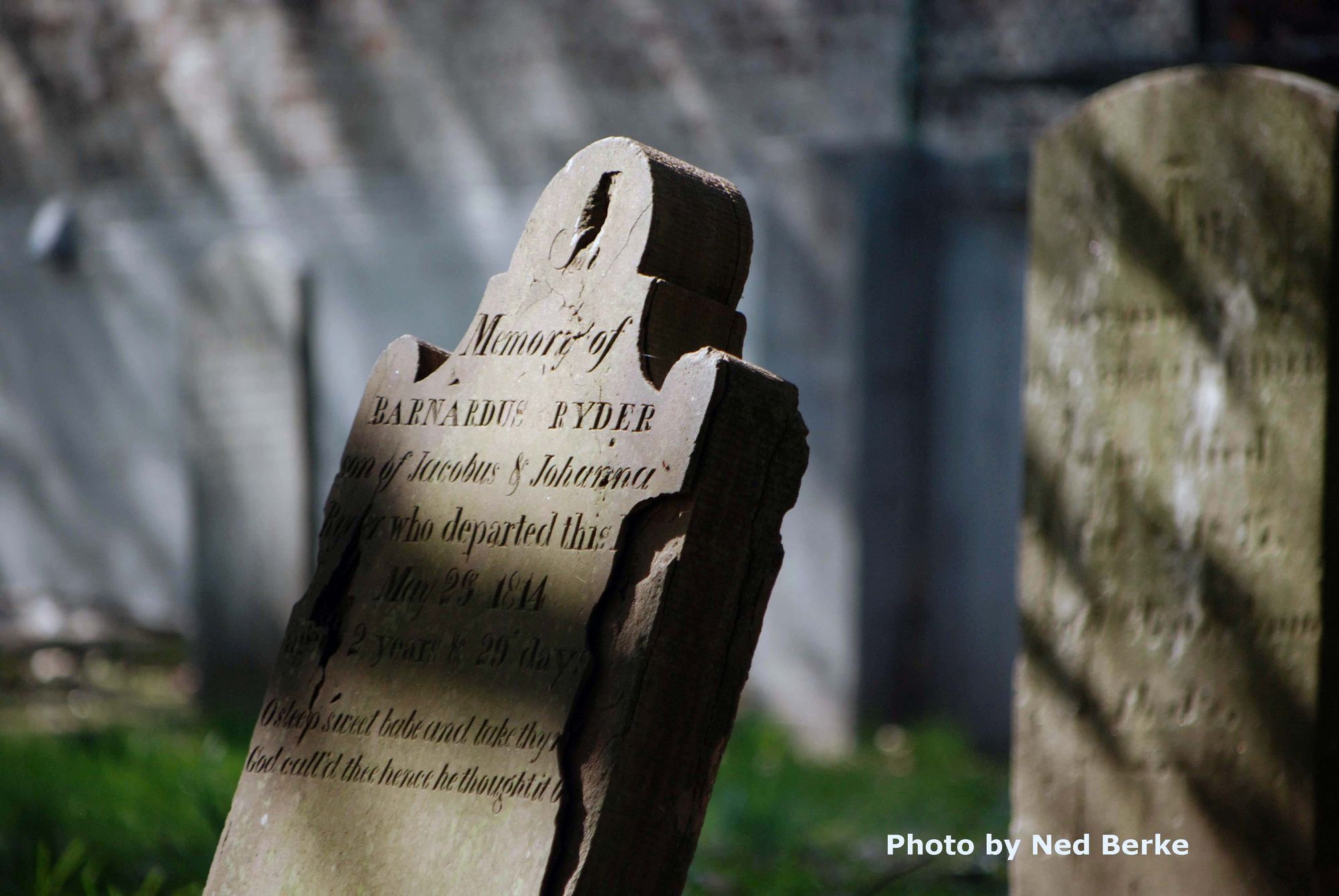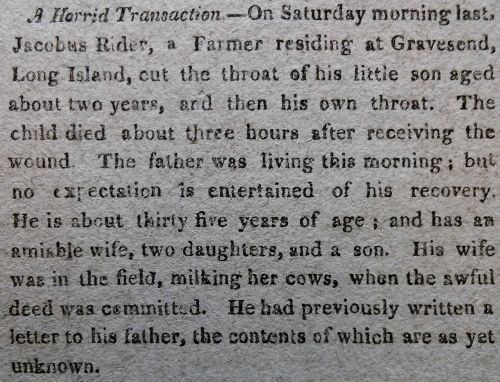A Grisly Bicentennial: Man Kills Toddler, Self In What May Have Been Gravesend’s First Murder-Suicide

Two hundred years ago this week, the now historic village of Gravesend was rocked by a violent and tragic outburst that may have been the town’s first murder-suicide.
The bicentennial was first noted by historian and friend of the site Joseph Ditta, who posted on his blog of Gravesend history about two gravestones in the 364-year-old Gravesend Cemetery at Gravesend Neck Road and McDonald Avenue.
Ditta came across two stones, cracked and flaking with age, baring the names of 2-year-old Barnardus Ryder and his father, Jacobus Ryder. The Ryders died just 10 days apart, with the child passing on May 29, 1814, and the elder on June 8, 1814.
At first, Ditta writes, one might assume the two were killed by a “contagion [that] carried off multiple relatives, as [illnesses] did for eons before the advent of standardized sanitation and medical care.”
But on further research, Ditta discovered this wasn’t the case. He writes:
[A]ssumptions often prove dangerously wrong. On Monday, May 30, 1814, the day after little Barnardus Ryder died, readers of the Commercial Advertiser, one of New York City’s leading newspapers, stumbled across this shocking report from the otherwise tranquil reaches of southern Kings County:

Newspapers up and down the eastern seaboard, from New Hampshire to Maryland, and as far inland as Ohio, recounted the tale of Gravesend’s “horrid transaction.” The version printed on June 1 in the Long-Island Star, Brooklyn’s leading weekly, managed to spell “Ryder” correctly, and added the detail that Jacobus — “long esteemed as a worthy and pious man, and . . . apparently in his right mind on the evening previous to the melancholy and dreadful act” — confessed in the letter to his father that he “imagined he heard a voice commanding him to execute the deed.” He lingered, sadly, until June 8, and died at the age of 44 years, three months, and 23 days.
Ditta doesn’t say in his post whether this was Gravesend’s first murder-suicide, but he told us that it’s quite possible.
“It very well could have been. It was a shocking story then, and even now, 200 years later,” he said.
By the time of the murder, Gravesend, one of the six original towns that later became Brooklyn, was already nearly 169 years old. But with a population numbering in the hundreds, it’s unlikely that a previous incident would have escaped the attention of record keepers.
The Ryders remain among the borough’s most famous residents, a founding family whose name still adorns streets, schools and libraries. The first Ryder, Barent Jurianz Ryder, emigrated from Holland in 1658. He later married Aeltie Van Voorhies, another familiar surname.
Check out the full story of these headstones and what came of Ryder’s descendants on Ditta’s Gravesend Gazette. You can also
read this August 2009 Q&A with Ditta about Gravesend’s history, and check out his book,
Gravesend, Brooklyn.



